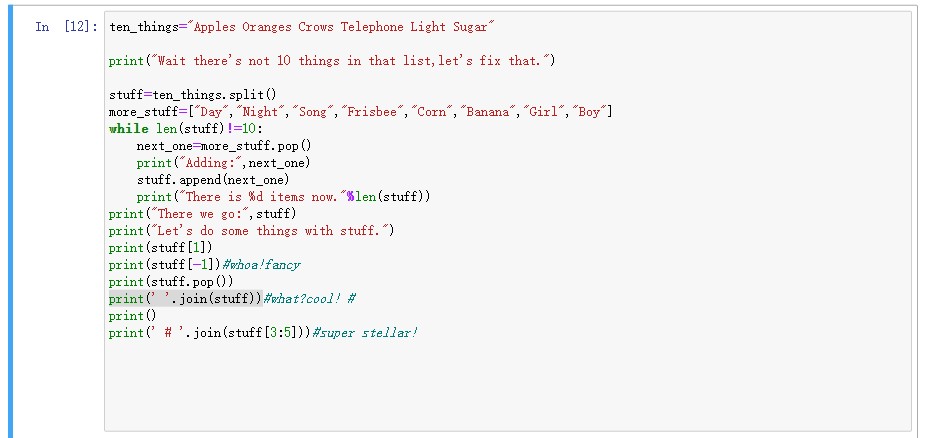|
|
马上注册,结交更多好友,享用更多功能^_^
您需要 登录 才可以下载或查看,没有账号?立即注册
x
- ten_things="Apples Oranges Crows Telephone Light Sugar"
- print("Wait there's not 10 things in that list,let's fix that.")
- stuff=ten_things.split()
- more_stuff=["Day","Night","Song","Frisbee","Corn","Banana","Girl","Boy"]
- while len(stuff)!=10:
- next_one=more_stuff.pop()
- print("Adding:",next_one)
- stuff.append(next_one)
- print("There is %d items now."%len(stuff))
- print("There we go:",stuff)
- print("Let's do some things with stuff.")
- print(stuff[1])
- print(stuff[-1])#whoa!fancy
- print(stuff.pop())
- print(' '.join(stuff))#what?cool! #
- print()
- print(' # '.join(stuff[3:5]))#super stellar!
上面这段代码是一个练习,习题后面解释了这两种方式
①print(join(' ',stuff)),②print(' '.join(stuff))
①的意思是打印”用‘ ’连接things“
②的意思是”为‘ ’ 和things“调用join函数
在我的这段代码里,为什么②可以执行,而①报错,join函数需要我提前定义么?②的这种写法也不是很理解


- a.join(b)
- # b是列表
- 用a来拼接b
- 比如:b=['b0','b1','b2']
- a=" "#空格
- a.join(b) #b0 b1 b2
|
|
 ( 粤ICP备18085999号-1 | 粤公网安备 44051102000585号)
( 粤ICP备18085999号-1 | 粤公网安备 44051102000585号)